
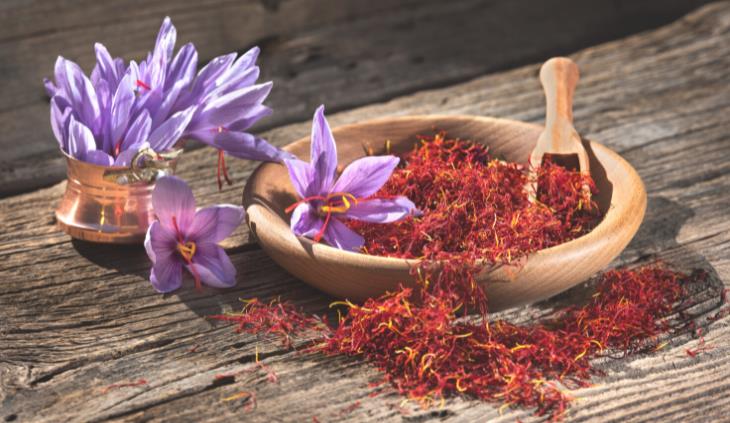
Saffron is the female part of the reproductive system of the Autumn Crocus flower, also called Crocus Sativus. Each flower produces three little saffron strands, deep red at the top and bright yellow at the bottom.
Apart from being a unique spice, saffron is also used to produce a natural golden dye, and has been found by multiple studies to have many health benefits. It supports liver function and cardiovascular health, prevents Alzheimer’s and Parkinson’s disease, improves memory, relieves depression and anxiety, and acts as an aphrodisiac. It also helps with symptoms of PMS.
Saffron is a staple spice in Persian cuisine and gives paella its signature color.
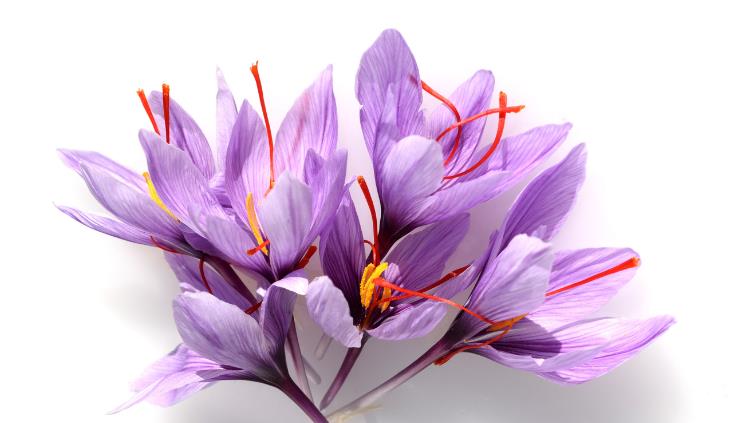
Being a saffron farmer isn’t exactly a cost-effective business. One acre of land will produce only 4 pounds of saffron. Its taste is highly affected by temperatures, humidity, irrigation, and soil. Harvesting saffron is a highly laborious process, based purely on manual labor; no machine can do the delicate work required to pluck the saffron strands from the flower.
It can take as much as 40 hours of manual labor to produce just 2 pounds of saffron. It takes as much as 150 flowers to produce just 1g of saffron. On Amazon, saffron sells at about $200 per ounce. At the local grocers, the rate can go as high as $1000 per ounce.
The high demand and profitable potential of the saffron business lead many people to sell fake saffron. They use corn silks, coconut fiber, horse hair, or a mix of high-grade and low-grade saffron, all dyed red to seem like saffron.
Wondering how you can tell real safron from fake? This video will help:
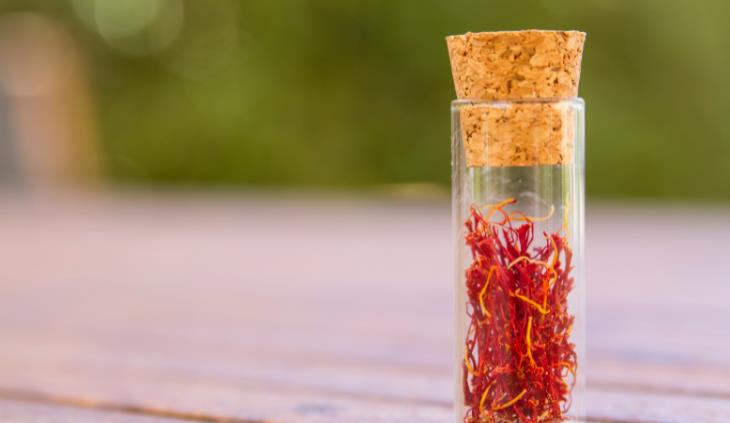
Convinced yet? Get your hands on some Autumn Crocus bulbs and let’s get gardening!
Know before you go:
* The flowers bloom for about six weeks from late September to early December. Plant the bulbs 6 to 8 weeks before that.
* You’ll need well-drained, highly fertile soil. A combination of 50% regular soil, 30% compost, and 20% fine sand will do perfectly.
* Saffron needs 4 - 5 hours of direct sun daily. A south-facing wall is optimal.
* In terms of USDA hardiness zones, zones 5-8 are the most hospitable for saffron.
Planting:
1. After preparing the soil mix, plant the bulbs stem side up, so that the bulb is fully covered in soil and the stem is above ground. Water generously.
2. After watering for the first time, water only when the top soil is dry.
3. You can expect new leaves to emerge from the stem within 6 days of planting.
Harvesting:
The flowers are best picked in the morning. You can use your fingers or tweezers to pluck the red strands out. Let your freshly picked saffron dry completely in a shaded place before storing it in an airtight container away from the sun.
Now that you've got your homemade organic saffron, here's a quick and easy recipe for Indian saffron milk.

10 Flowers That You Can Grow In Your Home and Garden
Flowers provide a wonderful way to decorate the house, and with this guide, you can learn how to grow 10 beautiful flowers in your garden or at home.

Did You Know That Your Washing Machine Needs Cleaning Too?
Most people never even think about it, but did you know that washing machines need washing too? Here's a quick guide to washing your washing machine.
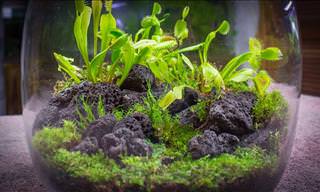 10:04
10:04
Even Venus Fly Traps Need a Place to Call Home
Who knew you could keep Venus Fly Traps at home? This gardener knows and shows the best way to do it!
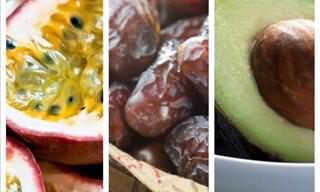
Grow These Common Fruits Easily Inside Your Own Home
You do not need any outdoor space to grow these delicious, common fruits.

I Bet You Didn't Know Your Android Phone Can Do These...
Did you know that there's a whole bunch of things your Android phone can do that you didn't even know about? Here are 8 hidden tricks on your Android phone.

Here's How Often You Should Be Cleaning Home Essentials
We need to clean things in our home regularly in order for us to maintain them and ensure good hygiene. This guide will show you exactly how often you should.

Choose the SAFE Way to Remove Mold From Your Home
Mold is not only unsightly, it can also be a health risk. Learn how to recognize it and get rid of it with ease.

Surprising Papers You Must Shred to Prevent Identity Theft
If you don't shred these seemingly harmless documents and throw them directly into the trash, you may be subject to identity theft...
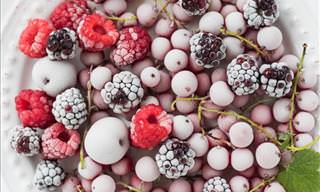
If You Value Your Health, Wash These 9 Foods Well
Are you washing these 9 foods correctly? Probably not!

10 Easy Ways to Remove a Troublesome Splinter
Splinters are painful and can be a nightmare to remove. However, the following 10 home remedies make removing a splinter easier than ever before!
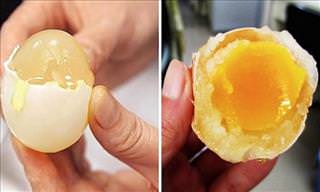
Watch Out for These 10 Fake Plastic Foods Made in China
China is a manufacturing behemoth responsible for many great products, but also some horrible ones too. The following 10 fake foods are seriously dangerous.
 3:52
3:52
Did You Know Vinegar Has a Whole Range of Different Uses?
Watching this video will make you love vinegar more than you ever did before - it has loads of different uses around the house.

10 Grocery Items That Drain Your Wallet
You could be wasting a lot of money at the grocery store!
 2:57
2:57
Be Warned! This Battery Could Be a Danger to Your Home
If you use 9V batteries, you need to be aware of this vital information.

Did You Know You Shouldn't Store These Foods in the Fridge?
Contrary to popular belief, these 10 foods shouldn't be stored in the refrigerator for a variety of reasons. Read this post to find out more.
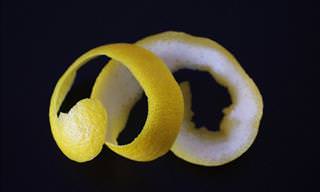
This Is Why You Should Never Throw Away Your Lemon Peels
25 reasons why you should definitely keep your lemon peels.
 14:12
14:12
Learn to Replace a Bathroom Faucet: Step by Step Tutorial
after watching this step by step video tutorial, you’ll know how to replace a bathroom faucet like a real pro...
 8:13
8:13
5 Best Salts to Cook With... and One to Avoid
Here's a guide to help understand which salts to buy, how to use them, and which ones to avoid.
 7:59
7:59
These Are the 8 Healthiest Plants To Have In Your Home
Houseplants have health benefits, from cleaning the air around you to boosting your mood. Learn which ones are the healthiest to have around.
 3:50
3:50
A Chef’s Secret to Cooking Potatoes In Half the Time
Potatoes are the ultimate side dish, but they can take quite a long time to cook. This trick will cut the cooking time by half.

Stunning! The Evolution of Beauty From 1952 to Today
Our definition of beauty may change as years go by but these pictures prove that true beauty is timeless.
 12:28
12:28
32 Tips and Tricks for Beginners to Sewing
In the following video, we've carefully curated 32 essential tips and tricks to ease your entry into the world of sewing.

10 Reasons Why Your Nonstick Cookware Is SO Short-Lasting
Here are 10 common cooking and maintenance mistakes that can ruin nonstick cookware for you to avoid in the future!

Keep Aphids At Bay with These Fantastic Home Remedies
Aphids are a pest that can wreck havoc in your garden. Thankfully, there are many simple ways to get rid of them. Here are 10 of them:

Banish Your Wrinkles With These Natural Face Masks
Keep your wrinkles at bay with these natural, easy to make face mask recipes.

The Perfect Morning Guide: How to Start Your Morning Right
Are your co-workers not allowed to talk to you before you’ve had a cup of coffee? You probably need to change up your morning routine!

How to Stop Worrying and End Anxious Thoughts at Night
Are anxious thoughts hindering your sleep every night? Here’s what you can do.

How to Prepare Matcha, the Healthiest Drink on the Market!
Matcha green tea is one of the healthiest drinks out there and this is how you can make it yourself.

Overspending on Food? It Could Be Due to These Mistakes
Here's a list of the most common shopping mistakes we tend to make.

9 Ingenious Q-Tip Hacks for Surprising Daily Uses
We bet you never thought cotton swabs could be so handy around the house!
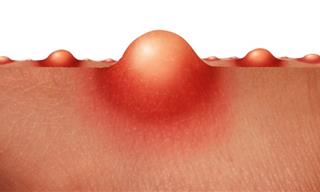
Banish Your Skin's Pimply Blemishes with These 8 Remedies
You thought and hoped you'd left those acne ridden days behind you. Well with these 8 home-remedies you may finally be able to enjoy pimple free skin.

Here’s How to Learn a Language from Scratch for All Ages
Here are 4 effective and fun techniques that will help you learn new words in a new language fast and forever.

Here Are Some Money-making Tricks That Restaurants Use
There are numerous tricks that restaurants and cafes employ to make clients spend more money. Here are 11 of these sneaky ploys.

Guide: How to Get Rid of 18 Bad Odors in the House
Familiarize yourself with the 18 items that can help eliminate, neutralize, prevent, and mask any unpleasant smells in every area of your home.
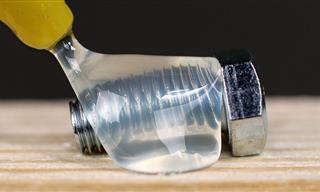 35:19
35:19
Super Tutorial: Top 100 Construction Tips and Hacks
Whether you're a skilled construction worker or just starting out, these practical insights will help you excel using simple tools.

These False Money-Saving Tips Will Make You Spend More
There are a lot of very common money management tips that are simply not true. These are 8 myths on saving that should be debunked.
 8:07
8:07
A Smarter Approach to Measuring Body Mass Index
The body mass index can actually be misleading. Here’s what you should use instead.
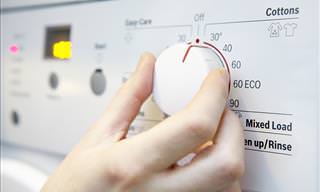
For the Good of Your Clothes, Stop These Laundry Mistakes!
Here are 9 common washing mistakes that reduce the quality and durability of your clothes.

10 Tips for Seniors to Use Tech Like a Pro
Seniors, enhance your tech skills with these tips.

If You Have Glasses, Here Are 12 Tips You Should Know...
Broken hinges, misplacement. These occurrences mean we sometimes need assistance in the vision department .These are 12 hacks to get by without spectacles.
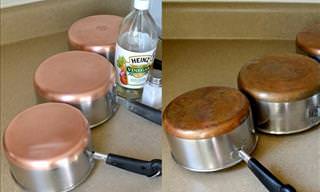
I Use Grandma's Old Trick for Cleaning Copper Pots
This is how to easily clean your copper pots.
 23:58
23:58
These Kitchen Tips Have Made My Life So Much Easier
This video will give you 31 unique kitchen tips and trick that will make life easier.
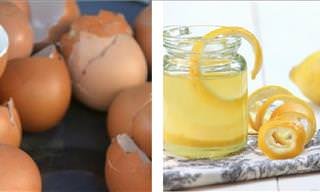
Click to See Unbelievable Uses for These Household Items
Click to learn more! We've collected Ba-bamail's best list of tips and alternative uses for things you've got lying around the house.

Manage Stress in Your 50s with These Meditation Techniques
Manage stress in your 50s with these meditation styles.

Can My Dog Eat That? An Important Infographic for Dog Owners
If you want to keep your dog safe and happy, you need to know what foods they can and cannot eat.

Vicks Has So Many Different Uses. Here Are 8 of Them!
Vicks can be found in households across the globe. This is a very useful ointment which has many unique uses. Check some of them out here.
 22:36
22:36
These Innocuous Car Items Conceal Surprising Dangers
If you're a car owner, this video will be really helpful to you.


